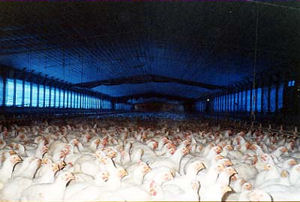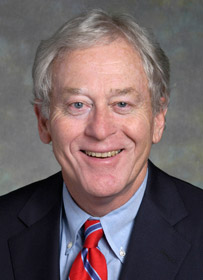Poop Power in the WSJ
July 12th, 2010
Fibrowatt in the Wall Street Journal?
I would think that Minnesota’s experience with burning chicken shit would wake up the world. How is it that so many states had the sense to run Fibrowatt right out of town, Alan Muller & Green Delaware led the charge in Delaware, and just recently, Fibrowatt was run out of North Carolina. He’s been digging into their file at the MPCA, it’s intense, he spent a LOT of time in the basement file room, got piles of papers and a disc or two, and he got a copy of the agreement after it came out:
FYI, here’s the PPA from November 2000 – I believe it’s been ratcheted up since:
To review the Minnesota Public Utilities Commission file on Fibrominn go to www.puc.state.mn.us and “Search eDockets” and search for docket “00-1169.” The compliance filings are redacted, so the comparisons between Fibrominn, Laurentian, and District Energy in the most recent filing that would be so enlightening, isn’t… DRAT!
What’s Minnesota’s experience with Fibrowatt/Fibrominn:
Contact: Forrest Peterson, 320-441-6972 Willmar, Minn. — The Minnesota Pollution Control Agency (MPCA) and Fibrominn of Benson reached an agreement recently resolving the company’s past failure to comply with state air-quality rules and permit conditions. Air emission violations occurring since 2007 resulted in a $65,000 penalty, and corrective actions including the installation of a new sulfur dioxide monitor at a minimum cost of $80,000. Fibrominn began operation in May 2007 burning primarily turkey litter to generate electricity. Since the start of operations, the facility has experienced numerous violations of its permit. The settlement addresses violations of late report submittals, failed performance test, and excess nitrogen oxide, sulfur dioxide and carbon monoxide emissions. The company also failed to self-report deviations that occurred during operation of the facility’s poultry litter-fired boiler. Fibrominn has since conducted the performance test and submitted a testing frequency plan, a continuous opacity monitor/continuous emissions monitor downtime elimination report, a pressure drop limit, a relative accuracy test audit test plan, a hydrochloric acid correlation curve and a permit compliance checklist. Minnesota law requires owners and operators of facilities with the potential to release air pollutants to have MPCA permits. Facilities must also carefully monitor and maintain equipment because emissions exceeding state standards can degrade air quality. The MPCA offers outreach and training to help facilities meet their permit requirements. For more information on air quality permits and emission standards, call Jennifer Lovett, MPCA air quality inspector, at 651-757-2538 or 1-800-657-3864. A stipulation agreement such as this is one of the tools used to achieve compliance with environmental laws. When calculating penalties, the MPCA takes into account how seriously the violation affected the environment, whether it is a first-time or repeat violation and how promptly the violation was reported to appropriate authorities. It also attempts to recover the calculated economic benefit gained by failure to comply with environmental laws in a timely manner. For a comprehensive list of enforcement actions by the MPCA, go to the agency’s Web site at www.pca.state.mn.us/newscenter/enforcement.html.
Here’s a link to Jim Turner’s blog digging into it when confronted with a proposal nearby in Page County, VA:
Where they were run out again:
But then we have yahoos like Delaware’s Senator Carper who just can’t seem to bend over far enough despite so much evidence on what a piss-poor idea poop power is:
So what’s Fibrowatt up to?
Back to the beginning, the article about Fibrowatt in today’s Wall Street Journal that means Fibrowatt is gearing up for another assault on some unsuspecting or uncaring state, with this about their plant here in Minnesota:
Here’s the full article:
Looking to Litter
Energy Company Sees a Future in Chicken Manure
Many farmers use chicken litter—a mixture of manure and bedding—as a fertilizer, either spreading it on their own croplands or selling it to other growers. But the litter increasingly is being blamed for phosphorus-laden runoff that chokes waterways in heavy poultry-producing areas, and environmentalists are pushing the federal government to set limits on its use.
Read the rest of this entry »
Byron Starns on both sides of the fence
July 6th, 2010
I’ve just by utter accident discovered a few things…
We all remember Byron Starns, attorney for Excelsior Energy’s Mesaba Project, the coal gasification project from hell. Check his bio – CLICK HERE – he’s done some amazing things, that Reserve Mining case in particular.
Now let’s take a walk back on memory lane, the 2003 Prairie Island bill, where the “Environmental Coalition”, i.e., Izaak Walton League, MCEA, ME3/Fresh Energy, and Xcel and Tom Micheletti did a deal that advance wind some, let Xcel continue using Prairie Island and increased cask storage, and opened the door for Micheletti’s Excelsior Energy and their IGCC plant that they’d been promoting since the 2002 session. On one hand, the “Environmental Coalition” including MCEA, in the middle we have Xcel, and on the other we have Tom Micheletti and Excelsior Energy…
Here’s the 2003 Prairie Island bill:
Minnesota Session Laws 2003 – 1st Special Session, Chapter 11
Here’s what it did for Mesaba (as if calling burning garbage “renewable” wasn’t enough):
Excelsior Energy Mesaba Project related parts of 2003 Chapter 11
When the Power Purchase Agreements for Excelsior Energy’s Mesaba Project came up at the PUC, MCEA intervened, both as a party and representing others:
To look at the full docket, go to www.puc.state.mn.us and “Search Dockets” and search for PPA docket “05-1993” and Siting docket “06-668.”
And look who filed a Notice of Appearance for Excelsior Energy dated April 27, 2006:
And representing Excelsior Energy in the Siting Docket dated September 26, 2006:
And look who is noted in the MCEA Annual Reports as providing legal services to MCEA in 2005 and 2006, look in the fine print, why it’s Byron Starns!
Oh, but that’s not all, look who joins the Board of MCEA in 2007 … and remains through 2008… and 2009 according to his bio on the LSD site — why, it’s Byron Starns again!:
Board of Directors, Minnesota Center for Environmental Advocacy, 2007–2009 (linked)
His bio states he was on the MCEA board in 2009, but the 2009 IRS 990 does not list him as having been on it at reporting year end.
I just spoke with Byron Starns, who, with the forwarning to don his Kevlar vest, was kind enough to entertain a few questions, and said that (close to quotes but not quite):
MCEA has an ethical requirement, that everyone on the Board must make full disclosure of interests and conflicts, and that when issues do come up, anyone with a conflict has to leave the room. He said he didn’t participate in any decisions related to energy matters for MCEA. He does not recall if the fact that he was on MCEA’s board was disclosed in the Excelsior Energy Mesaba Project PPA or Siting dockets. Also, he noted he is no longer on the Board of MCEA.
I don’t recall any disclosure about this — do you?
Is it “not a conflict” because MCEA’s interests and the interests of their “clients” the Waltons and Fresh Energy are so closely aligned with those of Excelsior Energy because of that 2003 agreement?
CRVC sues over Development Agreement
July 4th, 2010
Really, this is their “site plan”
Remember LS Power’s proposal to build an 855MW gas plant by the Chisago County substation? And Xcel’s Mikey Bull’s statement that Xcel isn’t going to be needing this power and isn’t going to be needing any power for a while? There’s no Power Purchase Agreement in sight, no Certificate of Need application or Site Permit application to the PUC, but they do have a legislatively mandated utility personal property tax exemption thanks to Rep. Jeremy Kalin and Sen. Rick Olseen, and they do have a Development Agreement thanks to Lent Township and Chisago County, though they’ve yet to sign the Chisago County one…
And now they’ve got a lawsuit on their hands:
This was filed June 30 in Chisago County — Chisago County, Lent Townshiip and Sunrise River Energy, LLC have 20 days to file their Answer.
COAL?!?! What are they thinking?
June 29th, 2010
How much did the “Partners for Affordable Energy” pay for this? You can find them at www.powerofcoal.com and www.poweringourlives.com.
Here’s the revealing part, the very last paragraph:
The St.PPP picked up this “article” and yet omitted that closing truth:
Here’s the Bemidji Pioneer article:
Future energy needs still depend on coal
By: Brad Swenson, Bemidji Pioneer
About 50 percent of the nation’s electricity comes from coal, he said. “If not coal, then what? What’s going to make up that volume of fossil fuel?”
Read the rest of this entry »
More on Carbon Capture Pipedream
June 28th, 2010
Time to trot out the “Carbon Capture & Storage” red herring again(and check those teeth, how bizarre!). Yet another study out that shows that Carbon Capture ain’t happenin’ and we’d best be dealing with the problem and not pretending like CCS will save us.
Long-term Effectiveness and Consequences of Carbon Dioxide Sequestration – Shaffer
Bottom line:
The carbon sequestration pathway presented here posits great human effort in the next two hundred years but subsequent human inaction in the spirit of `out of sight, out of mind’. Alternatively, long-term leakage from the ocean or geological reservoirs could be actively countered by resequestration to stabilize climate at some desired level. However, there are serious concerns connected withthis. First, it would be difficult to gauge the global leakage rate that would have to be matched by the resequestration rate. Long-term monitoring of atmospheric CO2 concentrations would probably be the best way to address this but natural carbon-cycle fluctuations would complicate this approach. Second, resequestration would have to be carried out over many thousands of years, a burden for future society not unlike that of long-term management of nuclear waste. By greatly limiting carbon emissions in our time, we could reduce the need for massive CO2 sequestration and thus reduce unwanted consequences and burdens over many future generations from the leakage of sequestered CO2.
This came from a Yahoo News article:
Yahoo News June 27, 2010
Carbon storage faces leak dilemma — study
By Agence France Presse
PARIS (AFP) — Dreams of braking global warming by storing carbon emissions from power plants could be undermined by the risk of leakage, according to a study published on Sunday. [The study itself is available here: http://goo.gl/wygb
Rich countries have earmarked tens of billions of dollars of investment in carbon capture and storage (CCS), a technology that is still only at an experimental stage.
Read the rest of this entry »




